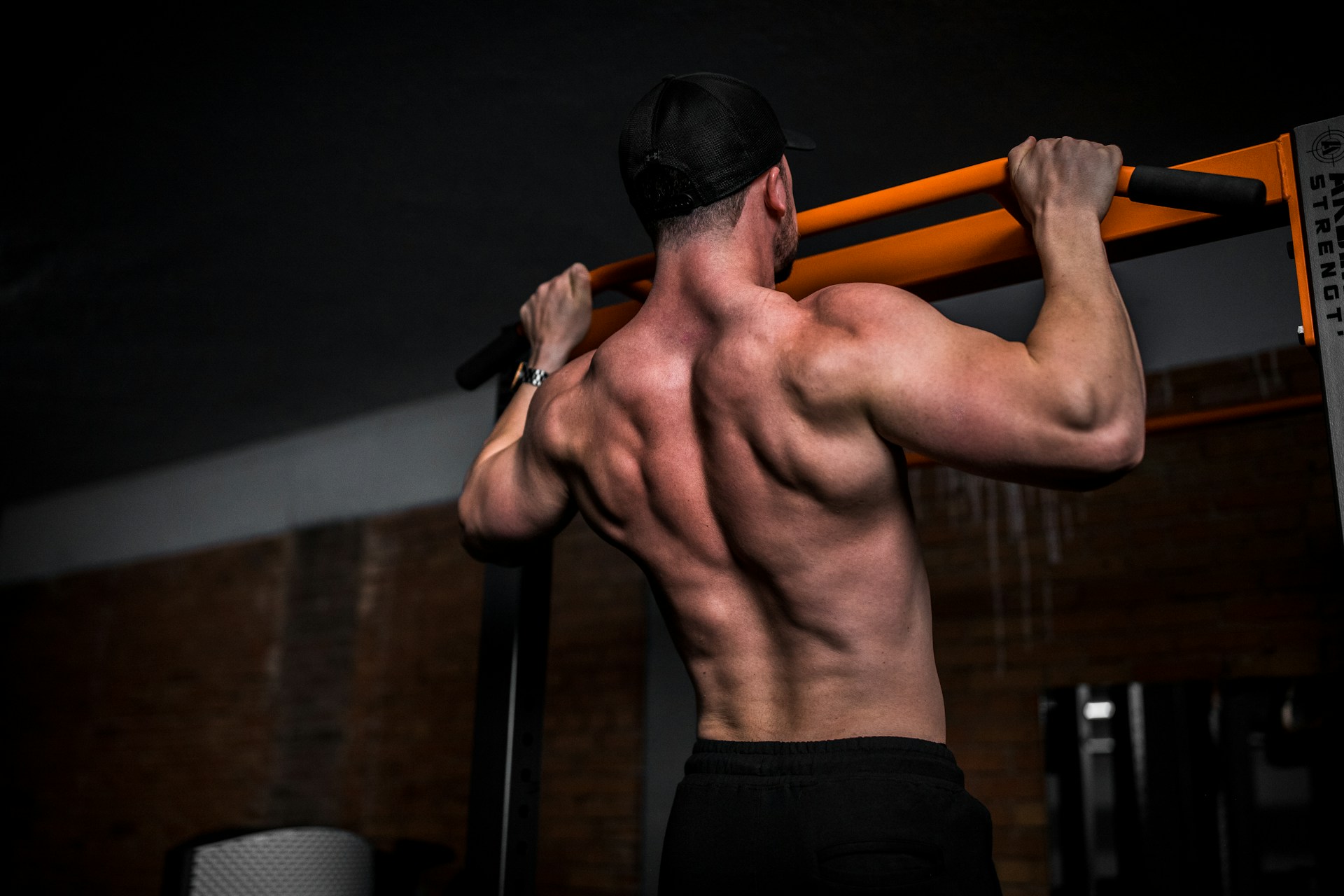Everyone wants strong pull-ups. It’s one of those iconic feats of strength that most gym-goers strive for—whether you’re chasing your very first rep or gunning for a new weighted PR. But achieving real progress takes more than just trying harder. Strategic programming can make all the difference, ensuring your pull-up goals are not only reached—but surpassed. (Not to mention the killer back gains you’ll build along the way.)

Phase 1: Getting Your First Pull-Up
If you’re working toward your first unassisted pull-up, don’t stress too much about fancy variations or complex programming. Your focus should be on two main things:
- Building general back strength and hypertrophy
- Reducing bodyweight (if that’s a limiting factor for you)
To go the extra mile, prioritize exercises that closely mimic the pull-up movement. The assisted pull-up machine is my top recommendation here. Unlike banded pull-ups, the machine offers a consistent resistance curve throughout the entire range of motion—making it much easier to track and progress.
Start by picking a level of assistance that allows you to complete 5–10 reps with good form. Then, gradually increase your reps or reduce the assistance (i.e., lower the weight on the machine, since that weight is subtracting from your bodyweight). Over time, you’ll be using less and less assistance until you’re cranking out clean bodyweight reps.
Another great alternative: inverted rows. While they don’t perfectly match the pull-up’s vertical movement, they’re highly accessible and effective, especially if your gym doesn’t have an assisted pull-up machine. You can even do them at home with a broomstick and two chairs! To progress, increase your reps and/or extend your feet further out until you can perform elevated reps. If you can knock out 10–15 elevated inverted rows, chances are you’re ready to hit your first pull-up.
Phase 2: Intermediate Programming
Once you can perform at least 5 clean pull-ups, you’ve graduated into intermediate territory, and this is where structured programming really starts to shine.
At this stage, consider adding a second pull-up day to your weekly routine with some light variation. For example:
- Day 1 (Strength focus): Bodyweight pull-ups, 2–3 sets of 5 reps
- Day 2 (Hypertrophy focus): Assisted pull-ups or high-rep bodyweight sets, 2–3 sets of 10–15 reps
This subtle variation keeps your training fresh while reinforcing the same movement pattern, boosting both strength and hypertrophy. The best part? This stage is highly scalable. As you surpass 10+ reps with bodyweight, start adding weight with a dip belt or dumbbell between your feet to stay in the strength-building rep range.
Eventually, you may not even need the assisted machine anymore, just your own body and some added resistance.
Phase 3: Advanced Pull-Up Periodization
This stage is for those who want to go all-in on maximizing pull-up performance. It’s not necessary for everyone—many will make incredible gains simply by sticking with intermediate programming. But if your goal is true mastery, consider adding a third pull-up-focused day to your weekly split.
Here’s what that might look like:
- Monday – Heavy Pull-Up Day: Weighted pull-ups, 3–4 sets of 3–6 reps
- Wednesday – Volume Day: Bodyweight or assisted pull-ups, 3 sets of 10–15 reps
- Friday – Power & Technique Day: Pull-ups focusing on explosive concentric tempo, 2–3 sets of 3–5 reps, with controlled eccentrics
The goal of this third day isn’t hypertrophy or max strength—it’s motor pattern efficiency. You’re training your nervous system to fire faster, with better technique and greater control. This “practice” approach builds explosive power and helps reinforce ideal form for the heavier sessions.
When you reach this level, pull-ups stop being just a tool in your training toolbox—they become a skill you’re actively refining.
Final Thoughts
Wherever you are on your pull-up journey, whether it’s your first rep or your next PR, these phases can guide your progression and keep your gains consistent over time.
Just remember: this is general pull-up periodization advice meant to complement a broader training program. For best results, your overall routine should still include full-body strength and mobility work.
And if you want to take all the guesswork out of your programming and get expert guidance every step of the way—I’m your guy. I help people reach their fitness goals, whether that’s their first pull-up or their strongest one yet. I’m currently accepting new clients, so feel free to check out my profile and reach out. Let’s get after it!



